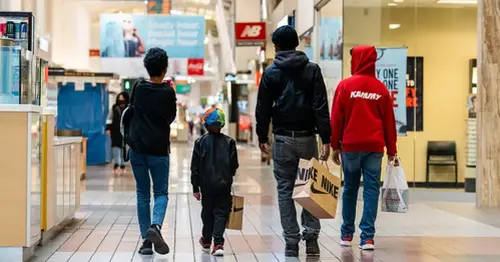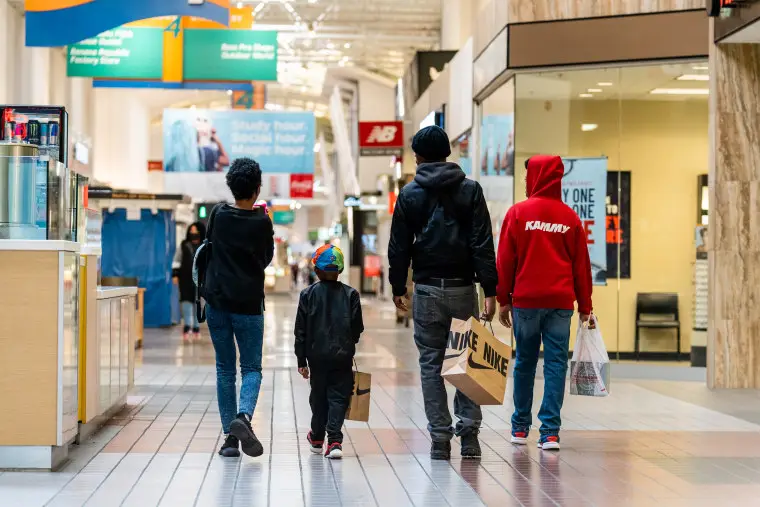
Where shoppers may see big Black Friday discounts—and where they won't
It’s a rare sight these days: price cuts.
While the pace of price hikes across the economy is starting to slow down, inflation was still running at 7.7% last month — a level not seen in around four decades. So this holiday season, retailers are using deep discounts to entice Americans to shop in stores and online. Clothing, shoes, toys and electronics are among the items already hitting sales racks heading into Black Friday.
In early deals this season, J. Crew is offering 50% off and Levi’s 40% off. Target is advertising 50% discounts on toys and games, and some TVs at Best Buy are seeing 60% markdowns.
Shopping expert Trae Bodge, who tracks deals on her site TrueTrae.com, said that 20% to 25% discounts appear to be standard for Black Friday weekend but that even steeper markdowns are widespread this year.
“I am seeing so much activity right now that I think it’s a really exciting time for shoppers to get out there and get their shopping done — and even do some stocking up for themselves as well,” said Bodge, who earns commissions on some of the sales flagged on her site.
Retailers are getting more aggressive not only in discounting steeply but in launching markdowns earlier than usual, hoping attract consumers who want to space out their holiday buying.
Footwear, men’s suits, women’s outerwear and infant apparel all saw price declines ranging from 1% to 4% between September and October, according to government data, as retailers trimmed prices ahead of the peak holiday shopping season.
Over the same period, toy prices fell by more than 1% and jewelry prices by more than 3%. Price tags for televisions and smartphones may also be attractive this season, since both categories broadly avoided the price hikes seen in other areas over the last year.

And while consumers are facing higher prices virtually across the board compared with 2021, some retailers say they’re rolling out their steepest markdowns since the pandemic began.
“The promotional calendar looks as sharp as ’19, as deep as ’19,” Ross Stores CEO Barbara Rentler said in an earnings call last week. “A couple of businesses, you say to yourself: It’s a little deeper than ’19.”
One reason for the early and aggressive discounting: supply chain trends.
Last year’s shipping delays and port backlogs have eased significantly, but some big retailers including Gap, Target and Best Buy have said they’re still sitting on excess inventory that’s pushing them to discount heavily. As Covid-related shutdowns abroad and labor shortages disrupted supply chains in late 2021 and early 2022, many companies were saddled with late shipments that they’re now desperate to move.
Footwear brand Toms, for example, had planned to receive shoes for the spring season in January but ended up getting shipments as late as May.
“The discount strategy we have now is to clear a lot of the spring goods that arrived late, so what you’ll see is a lot of those products on sale,” said Toms CEO Magnus Wedhammar. The company is advertising 30% off on its website.
As is always the case during the holiday season, some goods will remain in high demand — and high-priced. Bodge expects winter apparel, the latest smartphone models and the hottest toys to stay pretty expensive this year.
Those hoping to snag plane tickets may also find it hard to get a deal. Airfares were an eye-popping 43% higher in October compared to last year as consumers continue to ravenously book trips with airlines that remain short on pilots and under pressure from high fuel costs.
As holiday shoppers plan their budgets, Bodge suggests setting a spending cap to avoid splurging too much, focusing on gifts seeing the steepest discounts, and using deal sites to look for cash back and coupons. Already, Americans are racking up more credit card debt as the season heats up, risking damage to their credit scores and bank balances as card interest rates zoom past 30-year highs.
Source: https://www.nbcnews.com/business/consumer/shoppers-black-friday-discounts-rcna58431






